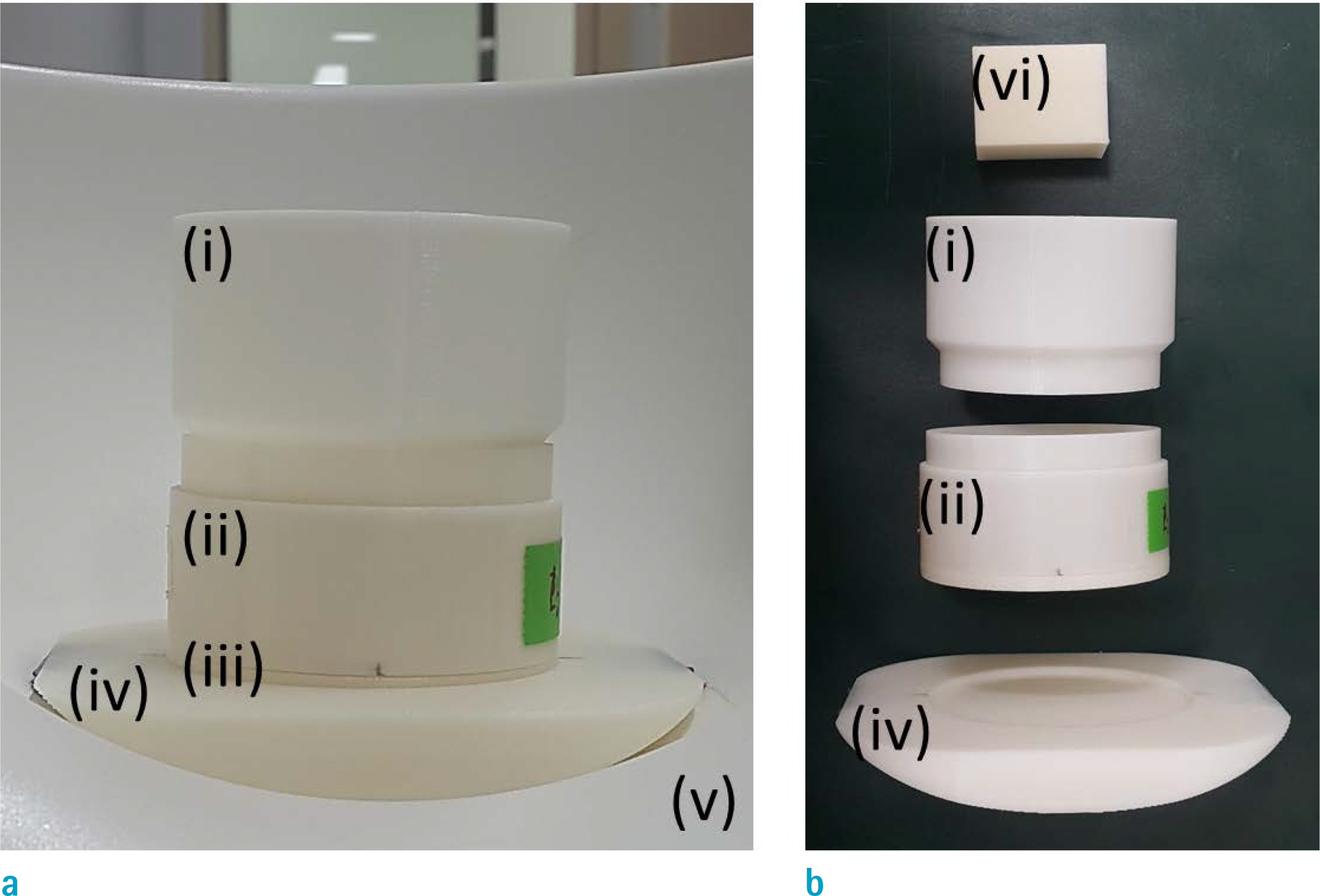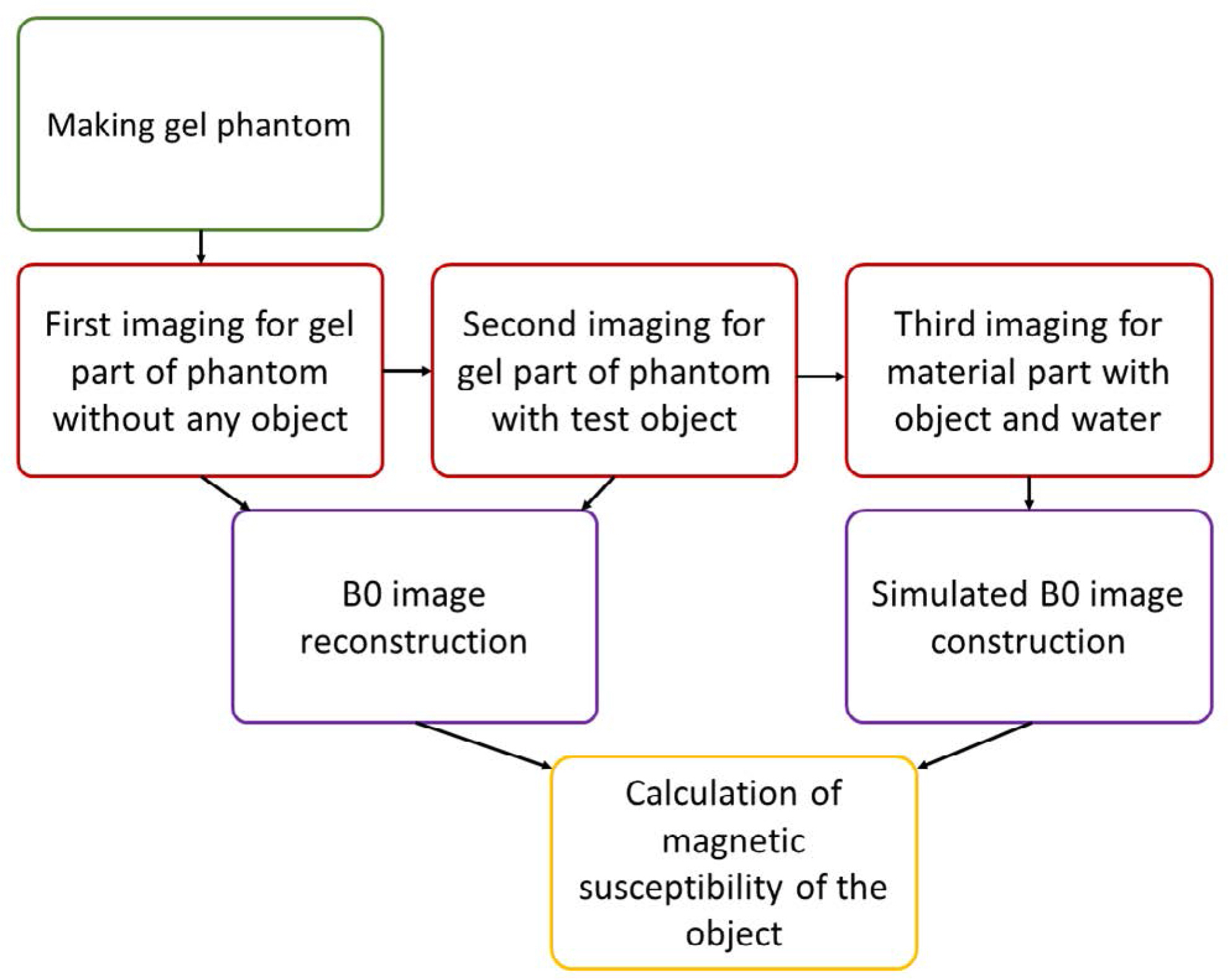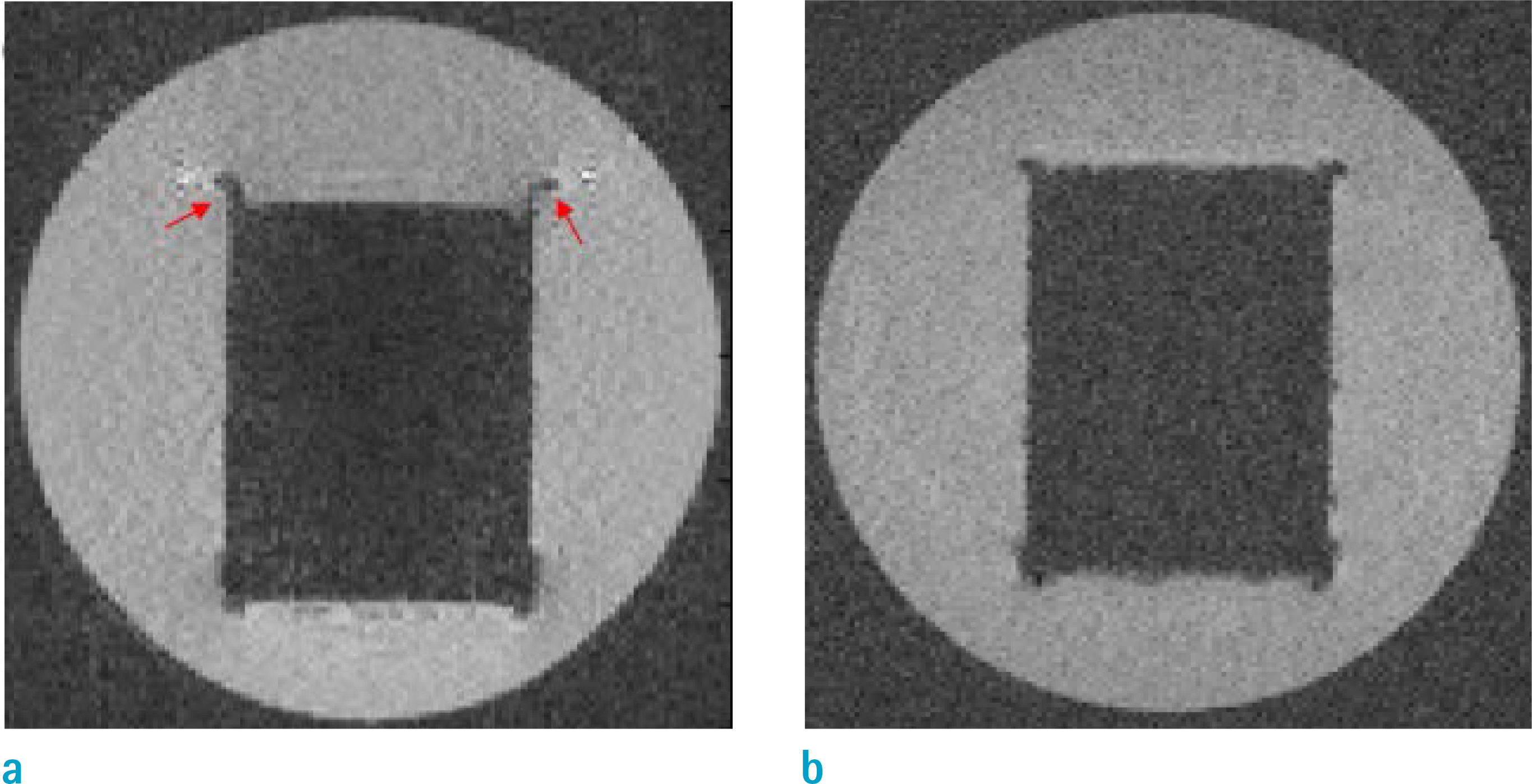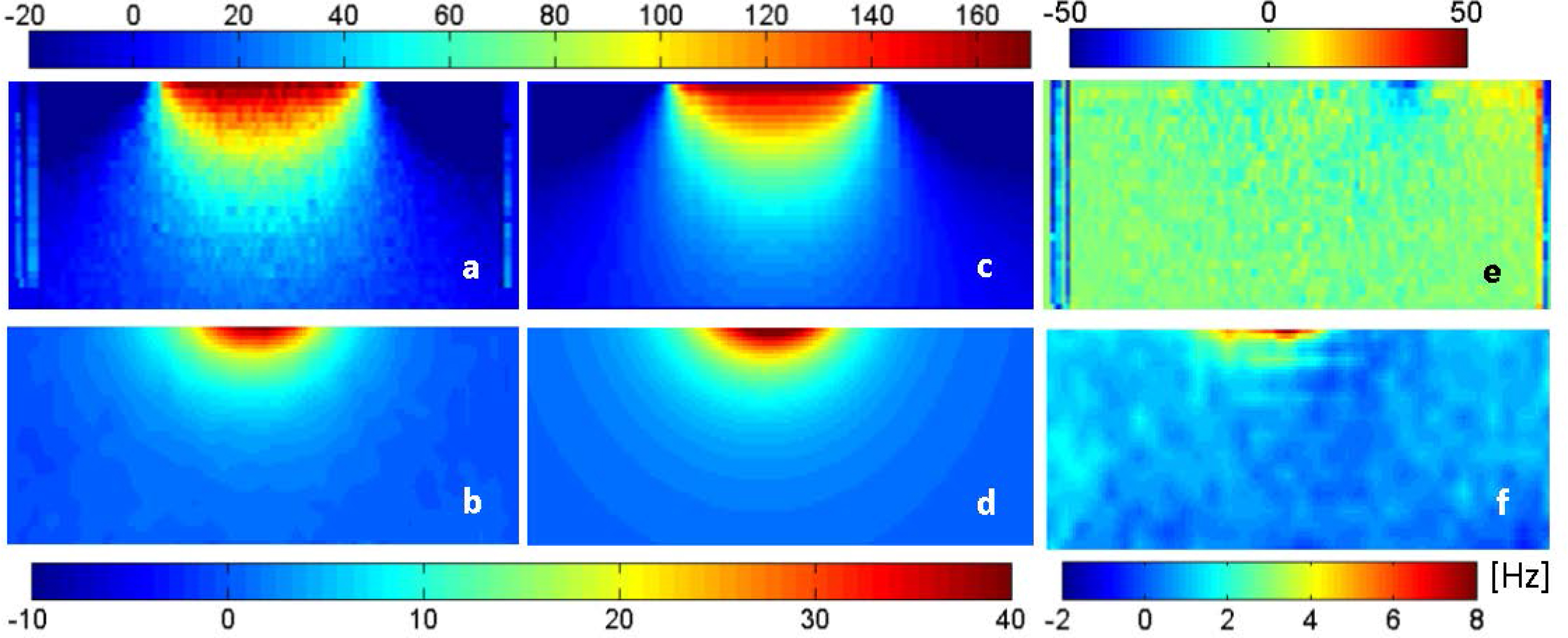Investig Magn Reson Imaging.
2018 Sep;22(3):141-149. 10.13104/imri.2018.22.3.141.
Efficient Experimental Design for Measuring Magnetic Susceptibility of Arbitrarily Shaped Materials by MRI
- Affiliations
-
- 1Department of Biomedical Engineering, Sungkyunkwan University, Suwon, Korea. seungkyun@skku.edu
- 2Center of Neuroscience Imaging Research, Institute for Basic Science, Suwon, Korea.
- KMID: 2421545
- DOI: http://doi.org/10.13104/imri.2018.22.3.141
Abstract
- PURPOSE
The purpose of this study is to develop a simple method to measure magnetic susceptibility of arbitrarily shaped materials through MR imaging and numerical modeling.
MATERIALS AND METHODS
Our 3D printed phantom consists of a lower compartment filled with a gel (gel part) and an upper compartment for placing a susceptibility object (object part). The B0 maps of the gel with and without the object were reconstructed from phase images obtained in a 3T MRI scanner. Then, their difference was compared with a numerically modeled B0 map based on the geometry of the object, obtained by a separate MRI scan of the object possibly immersed in an MR-visible liquid. The susceptibility of the object was determined by a least-squares fit.
RESULTS
A total of 18 solid and liquid samples were tested, with measured susceptibility values in the range of −12.6 to 28.28 ppm. To confirm accuracy of the method, independently obtained reference values were compared with measured susceptibility when possible. The comparison revealed that our method can determine susceptibility within approximately 5%, likely limited by the object shape modeling error.
CONCLUSION
The proposed gel-phantom-based susceptibility measurement may be used to effectively measure magnetic susceptibility of MR-compatible samples with an arbitrary shape, and can enable development of various MR engineering parts as well as test biological tissue specimens.
Keyword
Figure
Reference
-
References
1. Schenck JF. The role of magnetic susceptibility in magnetic resonance imaging: MRI magnetic compatibility of the first and second kinds. Med Phys. 1996; 23:815–850.
Article2. Schwartz B. Superconductor applications: SQUIDs and machines. Springer Science & Business Media New York: Springer US,. 2013.3. MPMS 3 Product Description. Available from:. https://www.qdusa.com/sitedocs/productBrochures/1500-102.pdf. Accessed September 8,. 2018.4. Wapler MC, Leupold J, Dragonu I, von Elverfeld D, Zaitsev M, Wallrabe U. Magnetic properties of materials for MR engineering, micro-MR and beyond. J Magn Reson. 2014; 242:233–242.
Article5. Neelavalli J, Cheng YC, Haacke EM. A fast and robust method for quantifying magnetic susceptibility of arbitrarily shaped objects using MR. Proc Intl Soc Mag Reson Med. 2008; 16:3056.6. Yoder DA, Zhao Y, Paschal CB, Fitzpatrick JM. MRI simulator with object-specific field map calculations. Magn Reson Imaging. 2004; 22:315–328.
Article7. Lee SK, Hwang SH, Barg JS, Yeo SJ. Rapid, theoretically artifact-free calculation of static magnetic field induced by voxelated susceptibility distribution in an arbitrary volume of interest. Magn Reson Med. 2018; 80:2109–2121.
Article8. Chu SC, Xu Y, Balschi JA, Springer CS Jr. Bulk magnetic susceptibility shifts in NMR studies of compartmentalized samples: use of paramagnetic reagents. Magn Reson Med. 1990; 13:239–262.
Article9. Joe E, Ghim MO, Ha Y, Kim DH. Accurate localization of metal electrodes using magnetic resonance imaging. J Korean Soc Magn Reson Med. 2011; 15:11–21.
Article10. Czervionke LF, Daniels DL, Wehrli FW, et al. Magnetic susceptibility artifacts in gradient-recalled echo MR imaging. AJNR Am J Neuroradiol. 1988; 9:1149–1155.11. Astary GW, Peprah MK, Fisher CR, et al. MR measurement of alloy magnetic susceptibility: towards developing tissue-susceptibility matched metals. J Magn Reson. 2013; 233:49–55.
Article12. Park SH, Nam Y, Choi HS, Woo ST. Quantification of gadolinium concentration using GRE and UTE sequences. Investig Magn Reson Imaging. 2017; 21:171–176.
Article
- Full Text Links
- Actions
-
Cited
- CITED
-
- Close
- Share
- Similar articles
-
- Multi-slice Multi-echo Pulsed-gradient Spin-echo (MePGSE) Sequence for Diffusion Tensor Imaging MRI: A Preliminary Result
- Simultaneous Unwrapping Phase and Error Recovery from Inhomogeneity (SUPER) for Quantitative Susceptibility Mapping of the Human Brain
- Quantitative Analysis of Susceptibility Effects in TRFGE and CGE Sequences for Functional MRI
- High-Resolution Numerical Simulation of Respiration-Induced Dynamic Bâ‚€ Shift in the Head in High-Field MRI
- The Usefulness of 3D Quantitative Analysis with Using MRI for Measuring Osteonecrosis of the Femoral Head






